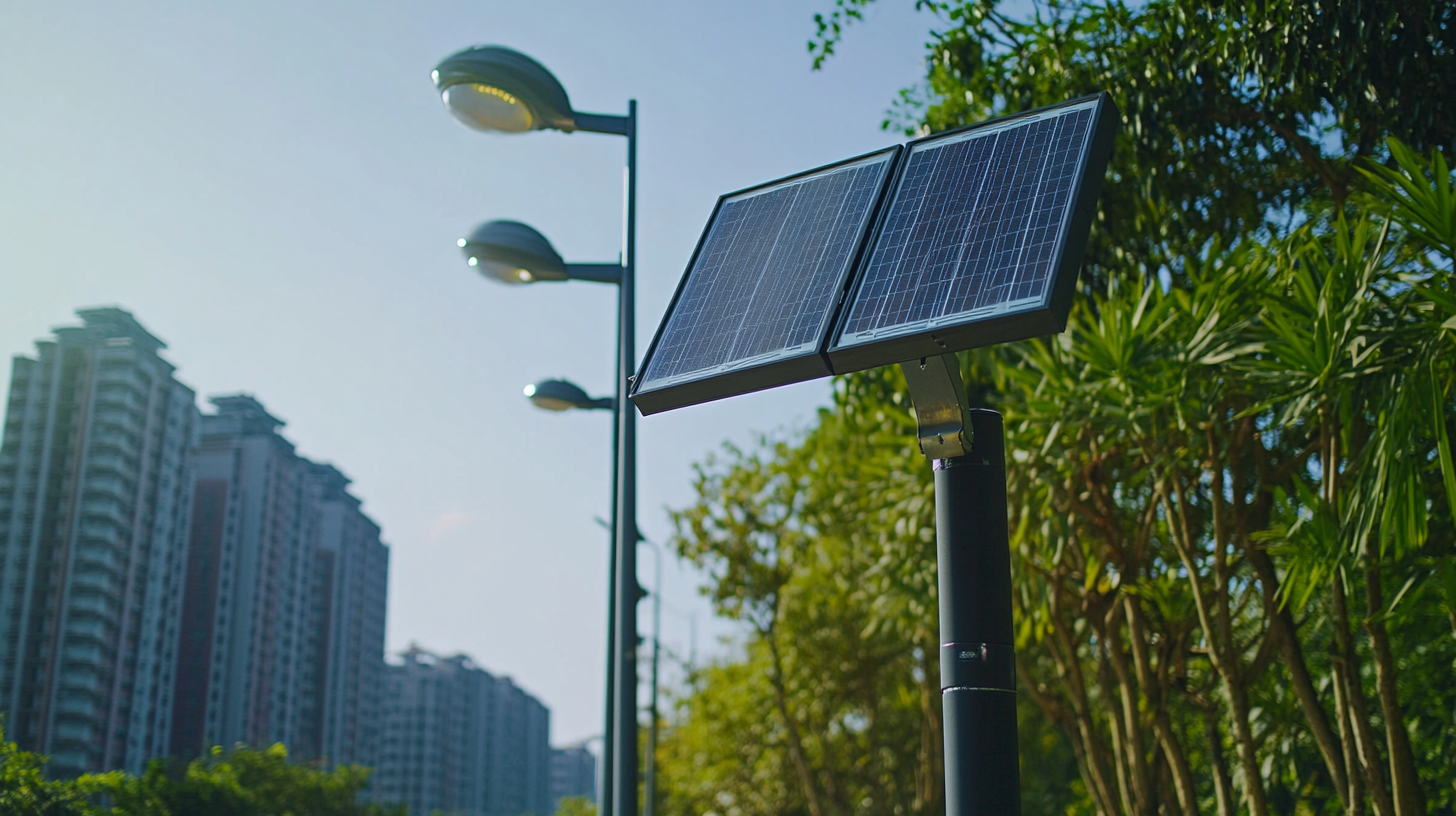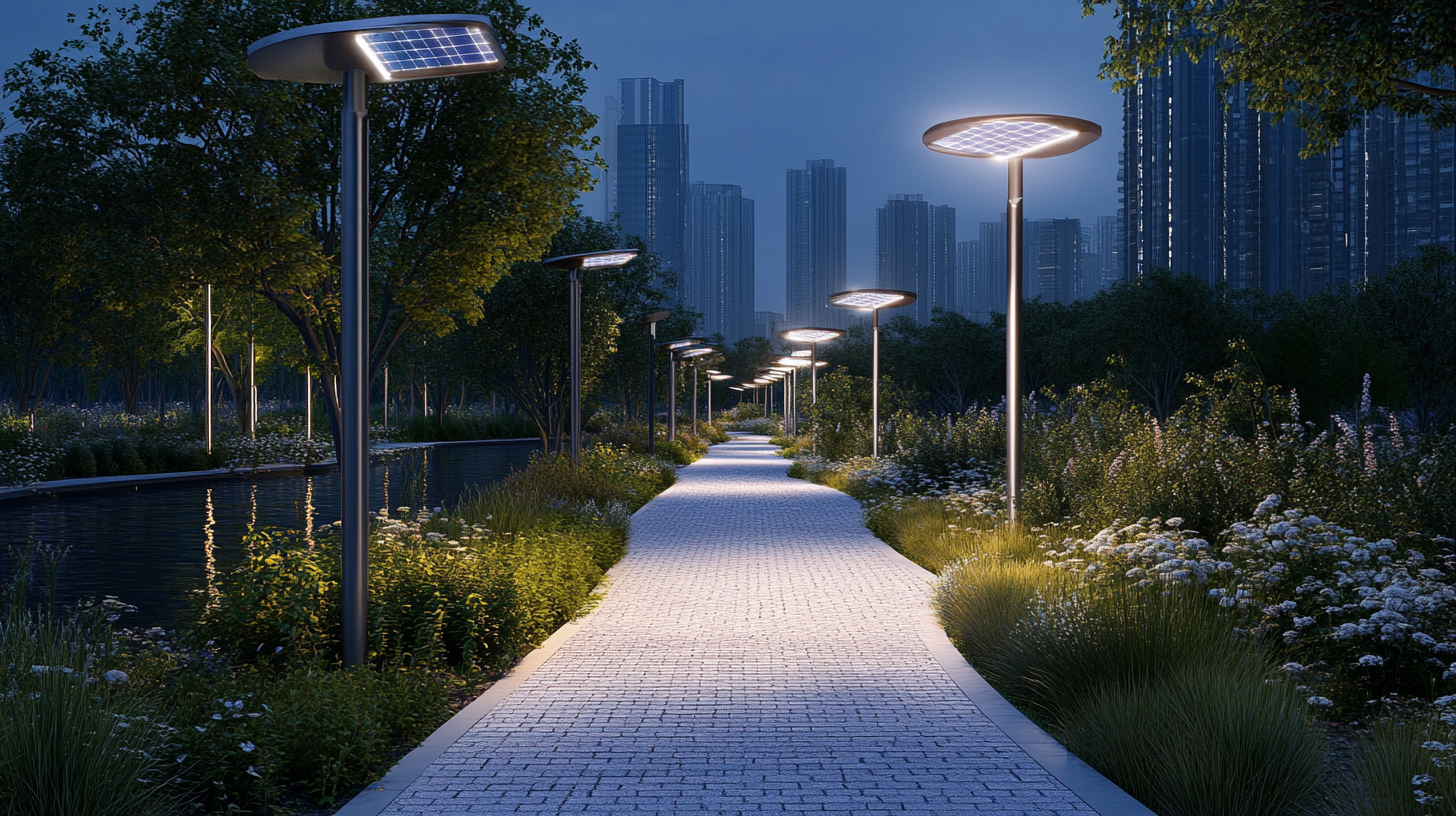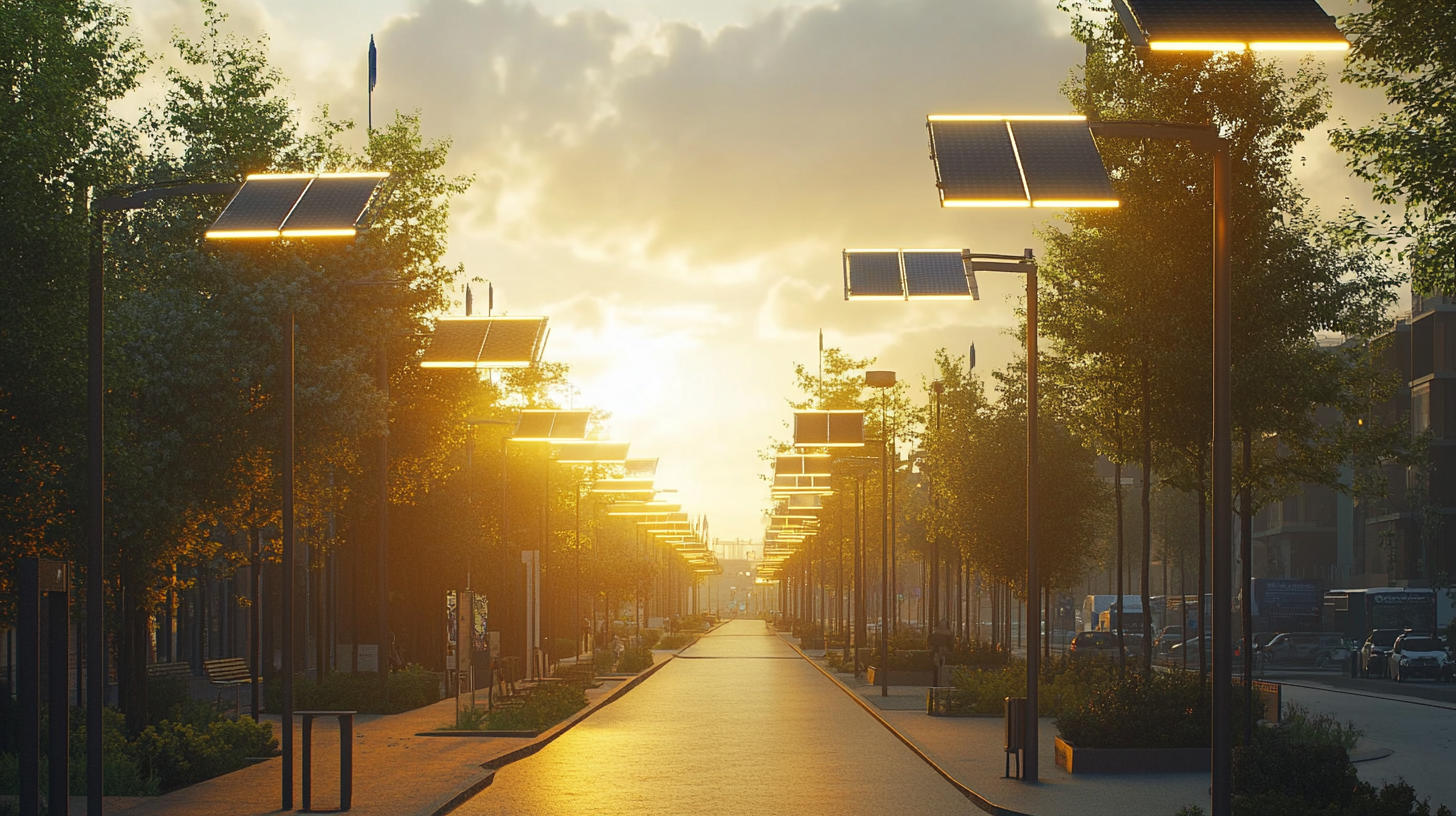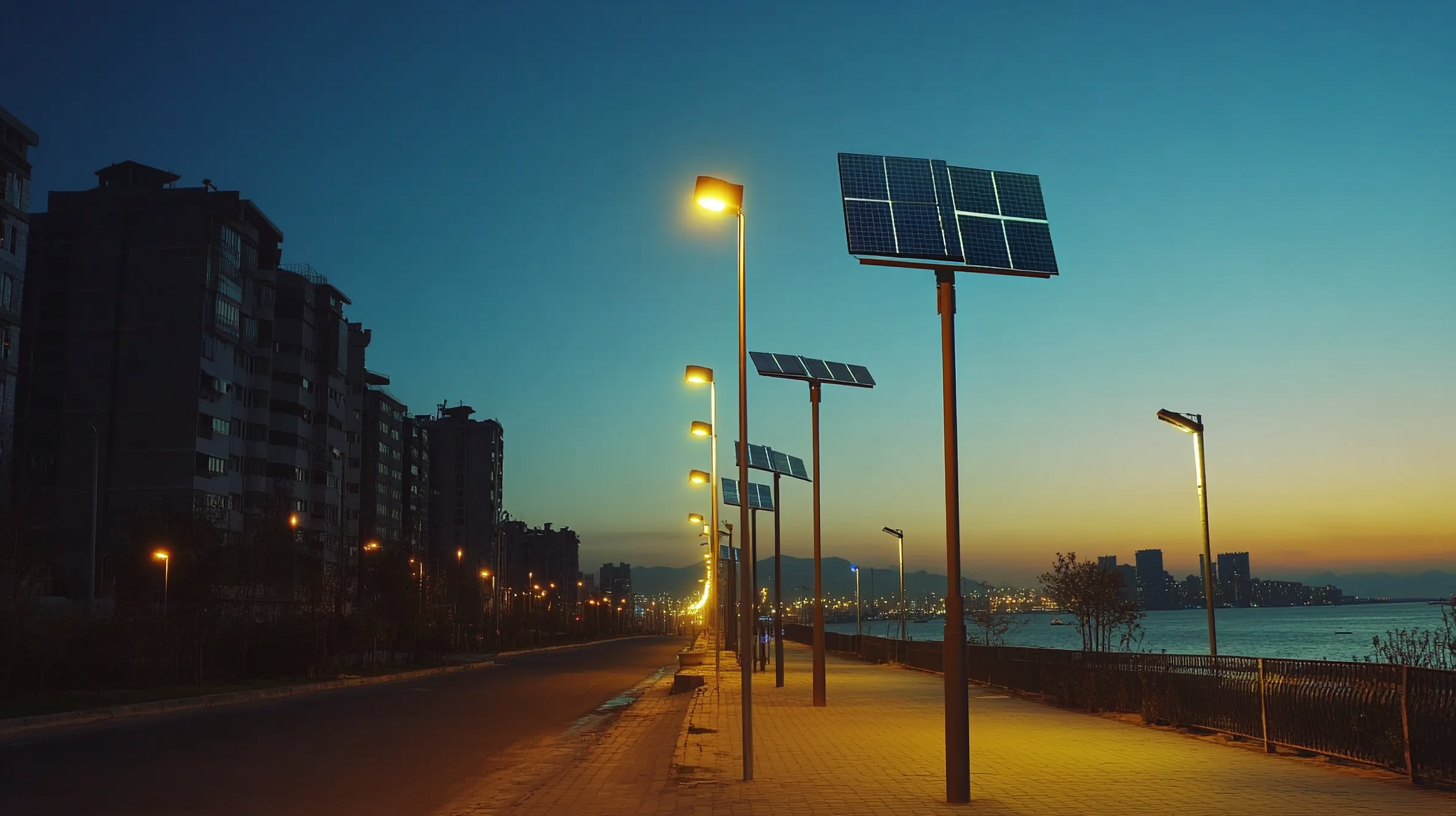Innovative Solar Street Lights for Sustainable Urban Development
As urban areas continue to expand and grapple with the challenges of sustainability and energy efficiency, innovative solutions are increasingly in demand. One such solution is the adoption of solar street lights, which have emerged as a pivotal technology in the quest for greener cities. According to a report by the International Energy Agency, lighting accounts for nearly 19% of global electricity consumption, with street lighting alone significantly contributing to this figure. The shift towards solar-powered street lighting systems not only reduces dependence on fossil fuels but also helps lower greenhouse gas emissions, making it a viable option for cities striving to enhance their renewable energy portfolios.
Recent market analyses indicate that the global solar street light market is projected to reach USD 11.6 billion by 2028, growing at a compound annual growth rate (CAGR) of 20.3% from 2021 to 2028. This rapid growth reflects an increasing recognition of the benefits of solar street lights, including reduced operational costs and improved public safety through better illumination. As municipalities invest in smart city initiatives, integrating solar street lights into urban infrastructure stands out as a crucial step toward achieving sustainable urban development while promoting energy independence and resilience in the face of climate change.

Benefits of Integrating Solar Street Lights in Urban Areas
The integration of solar street lights in urban areas presents a transformative approach to enhancing sustainability in city planning. One of the most significant benefits of these innovative lighting solutions is their contribution to reducing carbon footprints. By harnessing solar energy, cities can decrease their reliance on fossil fuels and lower greenhouse gas emissions, making strides towards achieving climate goals. This transition not only aids in environmental preservation but also promotes a greener urban image.
Moreover, solar street lights can lead to substantial cost savings for municipalities. Conventional street lighting is often a significant budget item, encompassing installation, maintenance, and energy costs. Solar lights, powered by the sun, offer a self-sustaining alternative that can dramatically reduce electricity expenses. Additionally, their low-maintenance design minimizes the need for frequent repairs, allowing cities to allocate budgets to other pressing needs.
Safety and security in urban spaces also see substantial improvement with solar street lights. Enhanced visibility at night encourages community engagement and promotes safer walkways, reducing crime rates in poorly lit areas. By illuminating streets and public parks, these solar solutions foster a sense of security among residents, encouraging them to utilize public spaces after dark. As cities continue to grow, integrating solar street lights becomes not only a practical solution but also a vital step towards creating sustainable and livable urban environments.

Technological Advancements in Solar Street Light Systems
The advancement in solar street light technology represents a significant step forward in sustainable urban development. With the growing concern for energy efficiency and environmental sustainability, cities are increasingly adopting innovative solar solutions that not only illuminate public spaces but also reduce carbon footprints. These systems, equipped with high-efficiency solar panels and intelligent control mechanisms, can store energy during the day to provide consistent lighting at night, thereby enhancing safety and accessibility in urban settings.
Recent developments in the Indian solar photovoltaic (PV) panels market illustrate this shift towards greener urban infrastructure. India is witnessing a surge in the adoption of solar technologies, driven by government initiatives aimed at promoting renewable energy. This rise in solar PV installation is pivotal in providing the necessary power for solar street lights, which play a crucial role in minimizing reliance on conventional electricity sources. Furthermore, advancements in battery technology and energy management systems have improved the efficiency and reliability of solar street lighting, ensuring they can operate effectively even in adverse weather conditions.
Moreover, the integration of smart technology into solar street lights is transforming urban landscapes. Features such as motion sensors, adaptive lighting, and remote monitoring capabilities enhance their functionality and efficiency. By leveraging real-time data, cities can optimize energy use, reduce operational costs, and enhance overall public safety. As urban areas continue to evolve, innovative solar street light systems will be essential for creating sustainable and livable urban environments, showcasing how technology and sustainability can go hand in hand.

Design Innovations for Enhanced Aesthetic Appeal and Functionality
As urban landscapes continue to evolve, the demand for innovative solutions that marry aesthetic appeal with functionality has never been greater. Solar street lights have emerged at the forefront of this movement, showcasing design innovations that not only enhance the beauty of public spaces but also promote sustainability. According to a report from the International Renewable Energy Agency (IRENA), the integration of solar street lights in urban settings can lead to a reduction in energy consumption by up to 80%, demonstrating a clear commitment to greener infrastructures.
Recent design trends emphasize sleek, modern lines and the use of materials that blend seamlessly with the urban environment. For instance, luminaire designs now feature integrated solar panels that are nearly invisible, effectively keeping the focus on the light itself rather than the technology. A study published in the Journal of Urban Planning highlights that well-designed street lighting can significantly improve public safety and contribute to a vibrant nighttime economy, increasing foot traffic in commercial areas by 30% or more.
Moreover, advancements in smart technologies are enabling solar street lights to go beyond mere illumination. Features such as motion sensors, Wi-Fi hotspots, and intelligent lighting controls allow cities to become 'smart,' optimizing energy use and enhancing the user experience. The Smart City Market Report estimates that global smart street lighting solutions will surpass $20 billion by 2025, underscoring the increasing adoption of multifunctional street elements that meet both the aesthetic desires and practical needs of urban populations. This fusion of innovation and design is paving the way for sustainable urban development, ensuring that cities are not only functional but also visually appealing.

Environmental Impact of Solar Lighting on Urban Sustainability
The advent of innovative solar street lights is paving the way for enhanced urban sustainability, aligning seamlessly with the principles set out in comprehensive climate plans like "PlaNYC: Getting Sustainability Done." By integrating smart solar lighting solutions, cities can significantly reduce their reliance on fossil fuels, thereby mitigating the environmental impacts associated with traditional energy sources. This shift not only decreases greenhouse gas emissions but also helps tackle issues like urban heat islands, providing a more comfortable environment for city dwellers.
Moreover, the introduction of solar lighting technologies represents a crucial step toward dynamic urban ecosystem management. As urban areas expand, the demand for sustainable energy solutions becomes increasingly urgent. Solar street lights contribute to this demand by offering an energy-efficient lighting alternative that supports both the ecological and economic viability of cities. By reducing energy consumption, cities can allocate resources more effectively, ultimately fostering a more sustainable urban landscape.
Studies indicate that transitioning to solar lighting not only benefits the environment but also promotes public safety and enhances the aesthetic appeal of urban areas. These smart lighting solutions are designed to adapt to surrounding conditions, ensuring adequate illumination while minimizing energy use. They exemplify how cities can leverage technology to meet sustainability goals, sparking innovation that resonates across various sectors and encouraging a broader commitment to environmental stewardship. As urban populations continue to rise, the implementation of such initiatives will be pivotal in shaping resilient and sustainable cities for future generations.
Case Studies: Successful Implementation of Solar Street Lights Worldwide
Innovative solar street lights are transforming urban environments worldwide, offering sustainable solutions that enhance safety, reduce energy costs, and promote eco-friendly development. A series of successful implementations in diverse locations serves as a testament to their viability. For instance, a community-based renewable energy project in Eastern Indonesia showcases how solar street lights overcome infrastructural challenges while aligning with local needs. By providing essential lighting in remote areas, these projects contribute to improved public safety and economic opportunities, demonstrating the effectiveness of decentralized energy solutions.
Data from the International Renewable Energy Agency (IRENA) indicates that solar energy could power up to 80% of the globe's energy needs by 2050 if appropriately harnessed. Incorporating solar street lights into urban planning is a proactive step towards this goal. In cities like Los Angeles and Barcelona, the integration of smart solar street lighting has led to a reported 30% reduction in energy consumption compared to traditional lighting. These installations not only lower operational costs but also significantly reduce carbon footprints, supporting more sustainable urban living.
Various case studies underscore the impact of solar street lights on community development. For instance, in Rio de Janeiro, the municipality implemented solar lighting in social housing projects, which resulted in a 40% decrease in crime rates in areas previously plagued by darkness. Such transformations illustrate the crucial role that renewable energy technologies play in urban crime reduction and community well-being. As cities worldwide seek innovative solutions for sustainable growth, solar street lights are paving the way for a brighter, more sustainable future.





